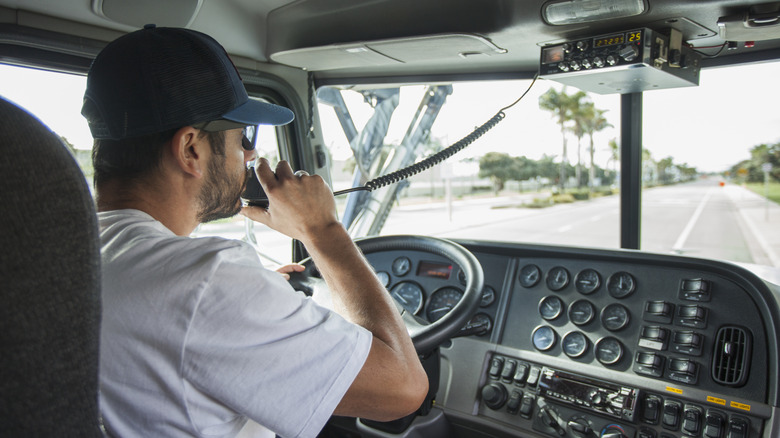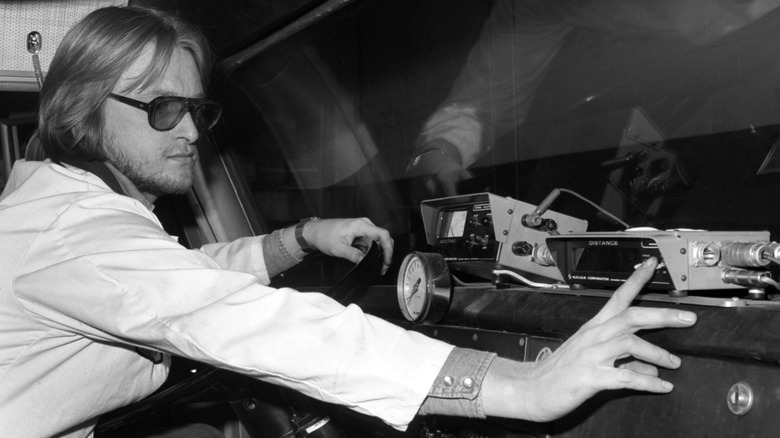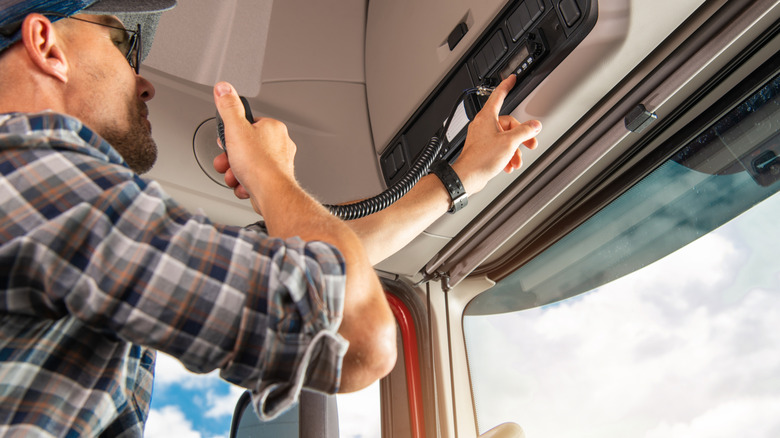Here's Why Truckers Say 10-4
If you've ever tried to mimic the Citizens Band (CB) radio ramblings of a truck driver, maybe you've caught yourself saying phrases like "copy that," "roger," "over," or even deep cuts like "the chicken coop is clear." But do you know what all those ramblings really mean? While some trucker slang is pretty straightforward, some coded messages are less obvious.
Take the universally recognized code "10-4" for instance. No, it's not a hand position on the steering wheel (that would be 10 and 2) or an indication of what numbers the hands of a clock are pointing to. In fact, it has nothing to do with numbers at all. The commonly used code amidst truck drivers simply means, "I understand," or "affirmative," communicating to the person on the other end of the radio that their message has been received.
The history of 10-4
Dating back to the mid-20th century, "10-4" is one of the oldest codes used in CB radio communication. The two-way CB radio was invented in 1945 by Al Gross, who had previously developed walkie-talkies for military use during World War II. After the war, the short-range radio was used for personal communication, primarily by people in remote areas such as farms. In 1958, CB radios were regulated by the Federal Communications Commission (FCC), which limited its use to 23 channels, later broadening that number to 40 channels.
It wasn't until the mid-1970s that the radios became popular among truck drivers. Driven by the infamous oil embargo in 1973, which caused a widespread gas shortage, truckers began using CB radio lingo to clue each other in on where they could find fuel. Though trucker codes have become more vast and intricate over the years, their original dialect was rooted in the 10-code system.
The system rates the clarity of incoming messages and has been used by police officers since 1955. For example, "10-1" translates to "receiving poorly," "10-2" means "receiving well," "10-5" is a request to "relay the message," and — of course — "10-4" means "message received." With over 200 10-codes in use on the road today, the classic codes like "10-4" are arguably among the most recognizable.
The road codes beyond 10-4
While truck drivers also use flashing lights and horn signals to communicate, CB radio codes are arguably their most well-known forms of correspondence. They've been immortalized in pop culture representations like "Smokey and the Bandit" and, more recently, a comedy scene in "Austin Powers: Goldmember." Indeed, the image of truckers transmitting gibberish over the crunch of radio static is one that many can easily conjure.
In addition to the classic "10-4" code, there are a few others you might recognize if you heard them, and others that sound downright wacky. If you hear one driver asking another "What's your '10-20'?," they're simply asking for their location. Meanwhile, a "10-100" signals the need for a restroom break (urination, specifically), and a "10-42" indicates a traffic accident up ahead. Beyond the 10-codes, the lingo gets a bit more creative with quirky phrases like "Catch you on the flip-flop" (meaning: "see you later"), or "hitting the jackpot" (getting pulled over). Even if you have a hard time comprehending the linguistic gymnastics of truck drivers, one of the most basic terms to know is "10-4." If you've got that down, you can say, well, "10-4."


